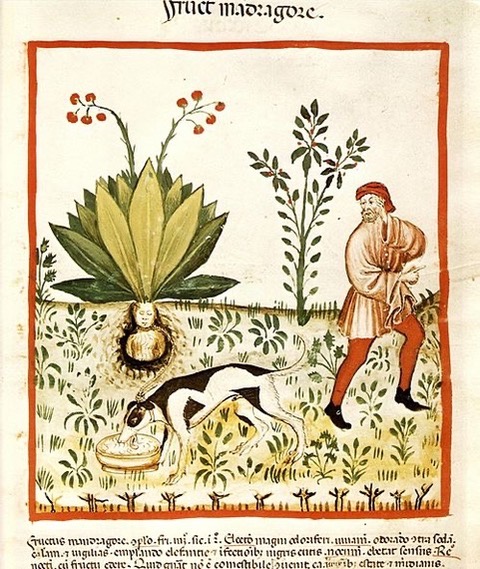Here is a summary of the recent weekly Section for Literary Arts & Humanities meeting of the local group in Fair Oaks, CA. This meeting occurred on June 6, 2020 via Zoom. In this meeting, we continued our exploration of Novalis.
Meeting Summary
Why have I included a picture of a mandrake in this meeting summary?
Answer: The mandrake is one of the very many items and characters that make an appearance in Klingsohr’s famous Fairy Tale, which is the highpoint and culmination of the incomplete novel Heinrich von Ofterdingen by Novalis.
Last night we spent the entire evening in discussion of the Fairy Tale. No one gave a presentation. We started with a question: what do each us find in the tale as a striking image or passage or question? But from here, the conversation spread in many directions.
I won’t even bother to summarize all the points that were made. These meetings have become lively, living events. I am amazed that we have been able to meet regularly each week since March — or that we have been able to master and ensoul the Zoom medium and transform its limitations to our purposes. And to devote our attention to Novalis — wonderful! We have now spent the equivalent of a full university quarter on Novalis and Heinrich von Ofterdingen — and if I were to include the three, hour-long presentations given by the Section to the Faust Branch in May, then I’d say we are very close to an entire university semester.
Wow. Is it time for seminar papers or special projects? Poems, artwork, music, short stories, novels? Watch this space, as they say.
Although the Fairy Tale that ends the first part of Heinrich von Ofterdingen is quite challenging, there is no better time to read it than now. Its message is as current as the news we see each day. These days I have been receiving a lot of emails that contain the message: “The time is at hand.” These are of course the familiar words that we find in Goethe’s Fairy Tale — but as we have discussed at length in our previous meetings, Goethe’s Fairy Tale and the Novalis Fairy Tale in chapter nine of HvO have much in common.
“The flax is spun. The lifeless are again unsouled. The living will govern, the dead will shape and use. The Inmost is revealed, and the Outermost is hidden. The curtain will soon be lifted, and the play commence. Once more I petition thee; then will I spin days of eternity.” (Heinrich von Ofterdingen)
Next week we will continue with the Fairy Tale, and perhaps we will have time to loop back to chapters seven and eight in the novel. Meanwhile, try to read the incomplete second part of the novel. I brought up the theme of the “Great Work” at our last two meetings. I’ll revert to that theme again as time permits in the coming weeks — or you might want to look at the novel from that alchemical perspective for our next weekly get-together.
Sophia said, “The Mother is among us. Her presence will render us eternally happy.
Follow us into our dwelling. In the temple will we dwell forever, and treasure up the secret of the world.” — Novalis, Heinrich von Ofterdingen

